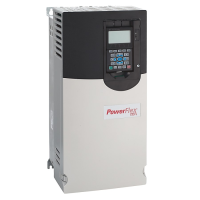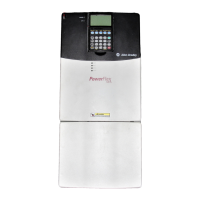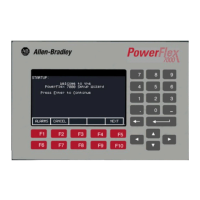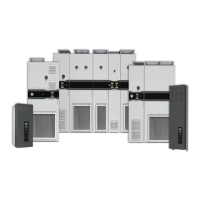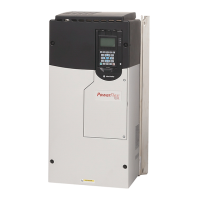2-12 Analog Inputs
Analog Scaling
[Analog In Hi]
[Analog In Lo]
A scaling operation is performed on the value read from an analog input in
order to convert it to units usable for some particular purpose. The user
controls the scaling by setting parameters that associate a low and high
point in the input range (i.e. in volts or mA) with a low and high point in the
target range (e.g. reference frequency).
Two sets of numbers may be used to specify the analog input scaling. One
set (called the “input scaling points”) defines low and high points in terms
of the units read by the input hardware, i.e. volts or mA.
The second set of numbers (called the “output scaling points”) used in the
analog input scaling defines the same low and high points in units
appropriate for the desired use of the input. For instance, if the input is to be
used as a frequency reference, this second set of numbers would be entered
in terms of Hz. For many features the second set of numbers is fixed. The
user sets the second set for speed and reference trim.
An analog input or output signal can represent a number of different
commands. Typically an analog input is used to control output frequency,
but it could control frequency trim, current limit or act as a PI loop input.
An analog output typically is a frequency indication, but it could represent
output current, voltage, or power. For this reason this document defines an
analog signal level as providing a “command” value rather than a
“frequency.” However when viewing a command value it is presented as a
frequency based on the [Minimum Speed] and [Maximum Freq] settings.
The 0-10 volt input scaling can be adjusted using the following parameters:
• [Analog In x Lo]
• [Analog In x Hi]
Configuration #1:
• [Anlg In Config], bit 0 = “0” (Voltage)
• [Speed Ref A Sel] = “Analog In 1”
• [Speed Ref A Hi] = 60 Hz
• [Speed Ref A Lo] = 0 Hz
• [Analog In 1 Hi] = 10V
• [Analog In 1 Lo] = 0V
This is the default setting, where minimum input (0 volts) represents 0 Hz
and maximum input (10 volts) represents 60 Hz (it provides 6 Hz change
per input volt).
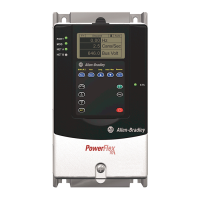
